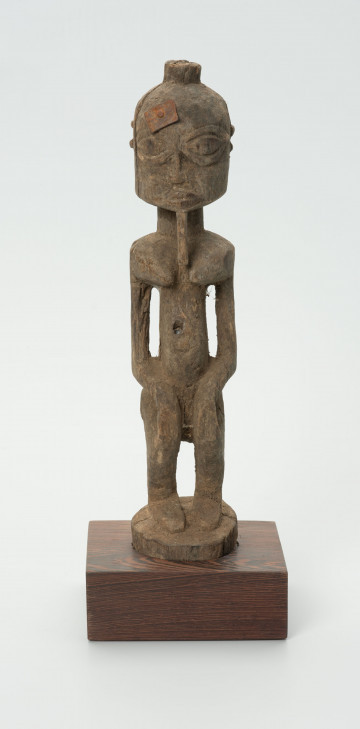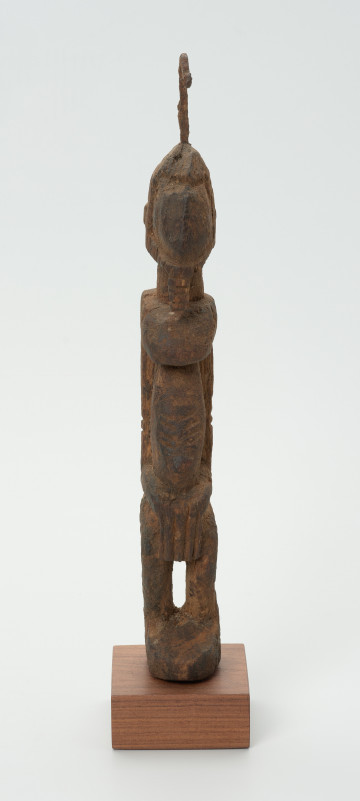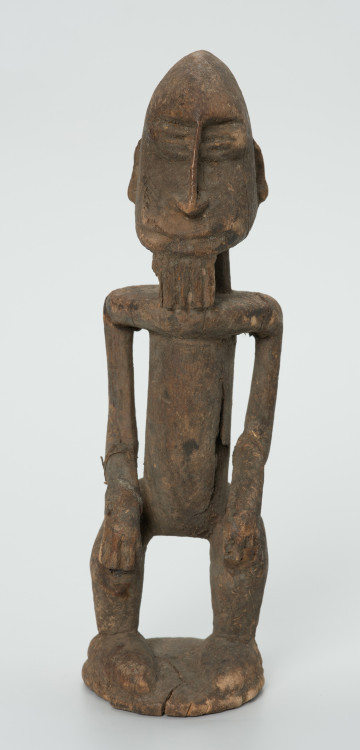
Figure - ancestor
między 1951 — 1991
National Museum in Szczecin
Part of the collection: Collection of Dogonian art
Wooden figures popular in Dogon art are placed on altars, numerous in the Bandiagara Escarpment. Many scholars and researchers have attempted to organize and categorize the Dogon altars. One of them was Marcel Griaule, a French anthropologist who conducted field research in the Dogon. From his observations and conversations with informants, he distinguished four types of altars: omodivenu, donikere, omosanu, diveyonnugu. He distinguished the first two groups according to their location. Omodivenu are always located outside the villages, while donikere are situated in their space. M. Griaule classified all altars connected with masks (among others, buguturu) to the group of omosanu, and to the fourth, last group - altars serving sorcerers, bringing evil and misfortune. It is commonly believed that the skills used by sorcerers are derived from Andumbulu, lowly creatures that inhabit the bush. Nowadays, the Dogon altars are divided into only two groups and distinguished between communal and personal. The former can be found both inside and outside the village, while the latter, personal altars are always located in homesteads. The personal altars are, for example, kutogolo and bala - the altars of the left-handers. Kutogolo is built by a father for his son and dedicated to the child's head (ku), considered the seat of thought and will. Its purpose is to increase and strengthen nyama of the offspring. When forming the altar from earth, where the father hides particles coming from the child. These can be nails, hair, sometimes drops of blood. Until the child has passed the initiation, the sacrifices on the altar are made by the parent. Then, when the child becomes an adult, it is the parent who takes care of kutogolo. The altar functions only during the life of its owner, it is destroyed after his death.
Ewa Prądzyńska
Author / creator
Dimensions
cały obiekt: height: 34,5 cm, width: 8 cm
Object type
figure
Creation time / dating
Creation / finding place
Identification number
Location / status

między 1951 — 1991
National Museum in Szczecin

między 1951 — 2000
National Museum in Szczecin

między 1951 — 1989
National Museum in Szczecin
DISCOVER this TOPIC
Museum of King Jan III's Palace at Wilanów
DISCOVER this PATH
Educational path